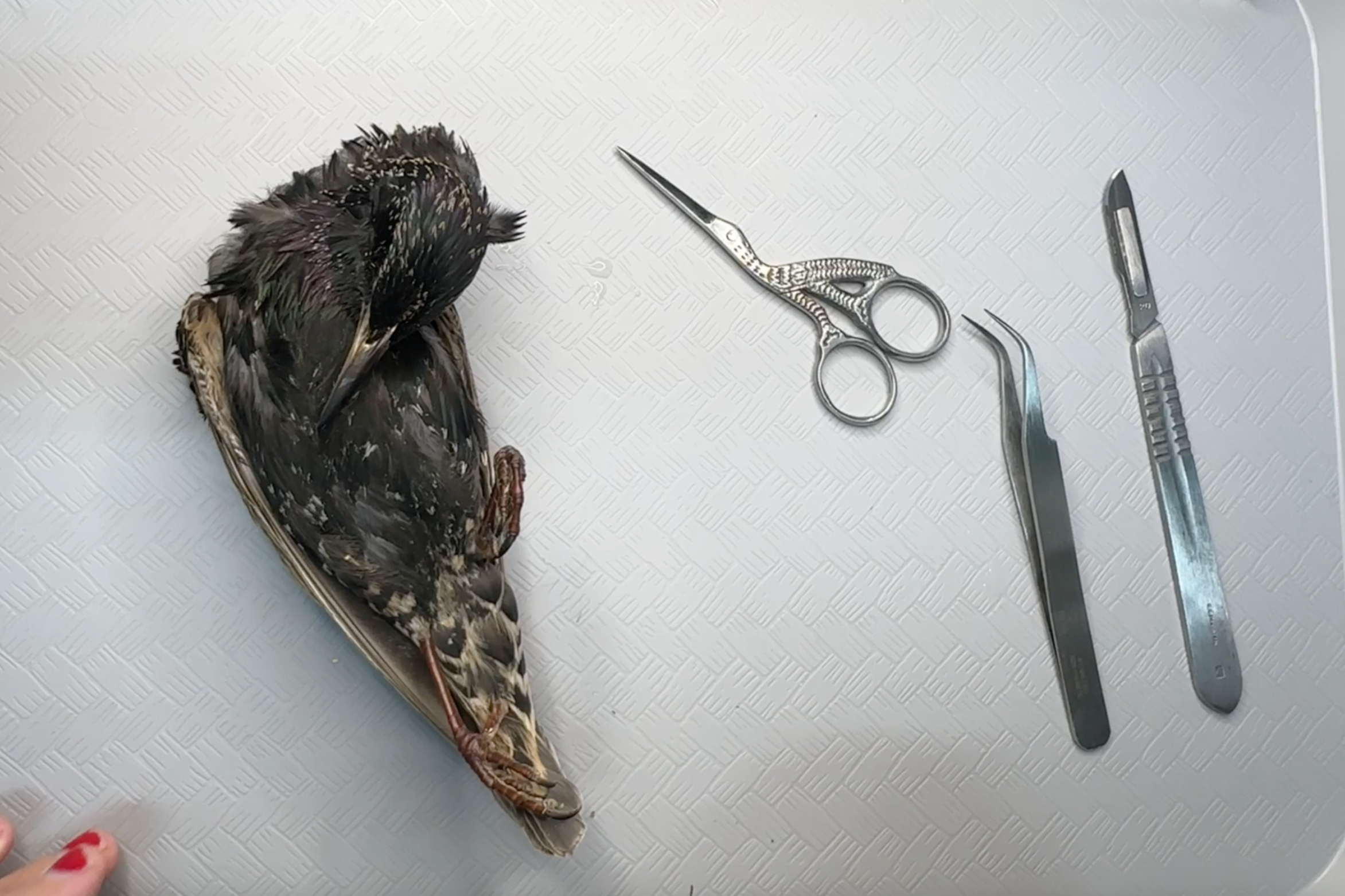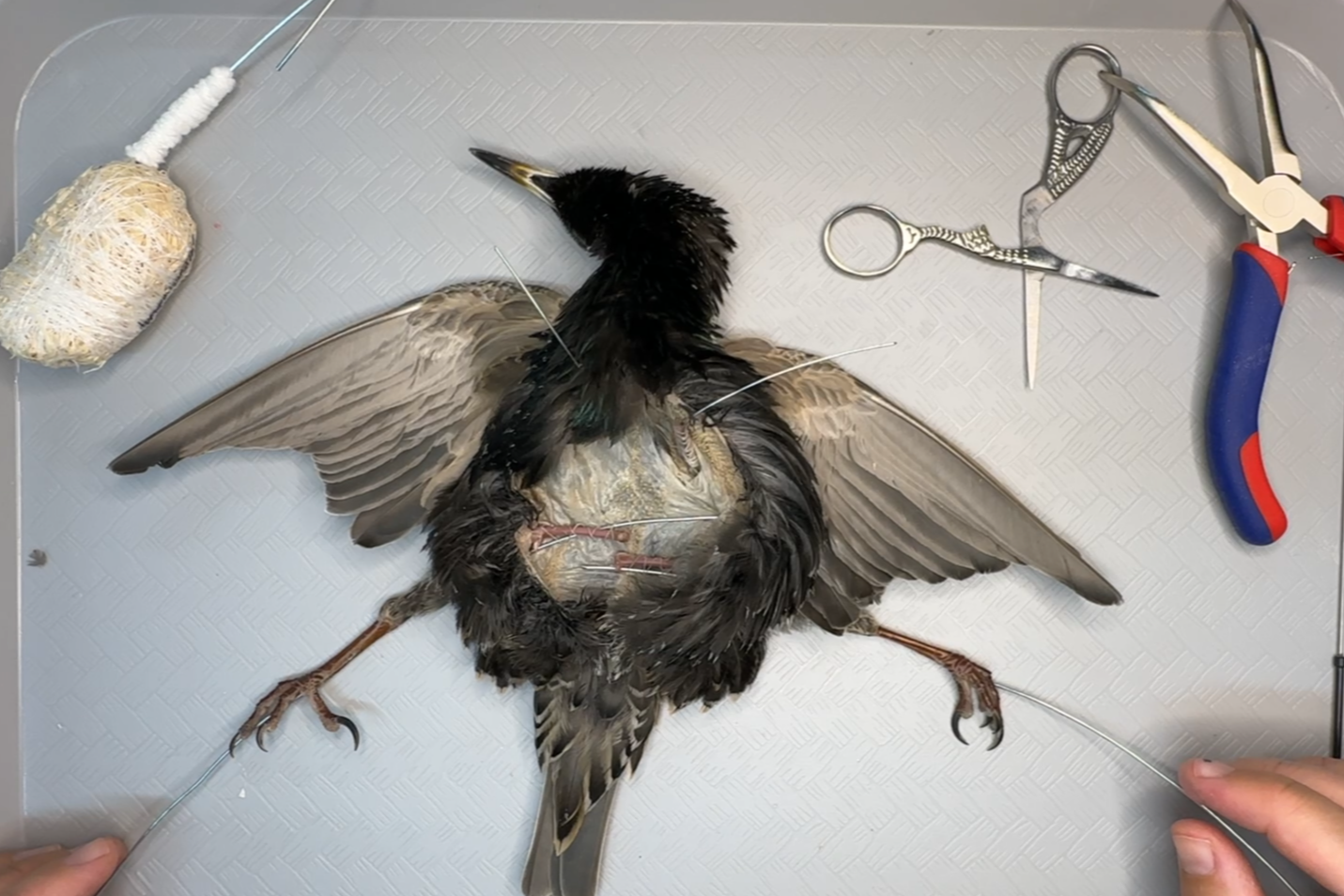How To Become A Taxidermist
Fisher by Charlotte Jesse of Vox Carnis Taxidermy. You can see other works for sale by Charlotte on our website.
Becoming a taxidermist is a journey with many possible paths, reflecting the diverse skills and knowledge the profession demands. There is no single, defined route to entering the field; taxidermy blends both science and art. Being a taxidermist requires proficiency in anatomy, biology, sculpture, and painting, and so much more. Whether through formal education, apprenticeships, self-study, or hands-on experience, aspiring taxidermists can develop their expertise in various ways. This flexibility allows individuals to tailor their approach to their strengths and interests, ultimately shaping a unique career in preserving and celebrating the natural world. I wanted to share some advice for those who are looking at taxidermy for their career path, but have no idea where to begin. In this blog, I go over a few options to get you started: taxidermy schools, bolstering a background in art or science, getting an apprenticeship, and learning on your own. While there are still more ways one can approach the career, I wanted to list a few different avenues one can take when building a portfolio as an aspiring taxidermist; additionally, there is a list of some suggested links for further research at the bottom of this blog.
Across the United States, numerous taxidermy schools offer comprehensive and immersive classes that range from one week to several weeks in length. These carefully structured programs provide an excellent opportunity for aspiring taxidermists who want an intensive crash course in taxidermy fundamentals: essential techniques, craftsmanship, biological knowledge, and hands-on skills. Given the limited availability of university-level taxidermy programs (I myself have only heard of one college that offers dedicated taxidermy classes), these specialized schools serve as vital entry points for those looking to kickstart their careers in taxidermy. They equip students with a strong foundational understanding, blending traditional and modern methods to ensure a professional approach to this unique and intricate art form. All in all, attending a comprehensive and intensive school is the best way to get your foot in the door and learn the basic skills needed to perform traditional taxidermy services.
Having a background in artistic fields such as sculpture, painting, or ceramics significantly strengthens your candidacy as a taxidermist. Taxidermy is a discipline that bridges both science and art, requiring a balance of technical knowledge and creative skill. Hands-on experience with physical crafts develops your dexterity and helps fine-tune your ability to manipulate materials precisely, which is an essential skill when preparing and mounting specimens. Artistic skills, such as interpreting reference images and creating accurate representations, translate well to the taxidermy field, where attention to detail and realism are important aspects of the work. Exploring diverse artistic practices, such as any time of sculpture, nature photography, and painting, not only broadens your creative perspective but also equips you with a versatile skill set that will prove invaluable throughout your taxidermy career.
The beginning of the bird taxidermy process.
Mounting a European starling (Sturnis vulgaris).
On the flip side, since taxidermy is both a science and an art, you can choose to focus on the scientific aspect and build a strong, well-rounded background in the natural sciences. Personally, I concentrated on biology to gain a much deeper understanding of our natural world and the important role animals play within it. Studying ornithology, in particular, allowed me to observe birds in a more profound way, focusing on their behaviors, key traits, and ecological stories they embody. Although this approach typically isn’t hands-on taxidermy itself, it greatly enhances the overall appreciation for the craft’s true purpose. I was also able to practice working on specimens, doing study skin preparation during my studies in school, and keeping up with the hands-on skills required of taxidermists. Developing a thorough understanding of the biology behind the species you preserve reinforces the importance of accuracy, respect, and authenticity in taxidermy, ensuring that each mount conveys a meaningful story that honors the life it represents.
Getting an apprenticeship in taxidermy is another excellent way to deepen your understanding of the practice through hands-on experience and direct mentorship from seasoned professionals. However, getting an internship or apprenticeship can be quite challenging due to the limited number of taxidermists who are willing and able to take on apprentices. Mentors typically seek students who demonstrate a genuine passion for the craft, as well as strong motivation, discipline, and a willingness to invest time and effort in their own personal and professional growth. I spoke a bit about the mentor/apprentice relationship on a recent podcast episode of Totally F#@!ing Normal, hosted by Maggie Federov of Boone’s Solace Taxidermy. Approaching potential mentors after you have already started teaching yourself at home shows your dedication to pursuing a career in taxidermy, making you a significantly more attractive candidate for any learning opportunity that may arise. By working closely with professionals, apprentices gain insight into the technical skills and artistic considerations essential for museum-quality taxidermy, which can lead to job opportunities in the taxidermy field. Moreover, given the scarcity of dedicated taxidermy studios, especially in Southern California, these internships may inspire taxidermists to open their own studios. Individuals can establish their own studios, creating hubs that both produce exceptional work and serve as educational centers. Such spaces become vital in nurturing the next generation of taxidermists, offering workshops and mentorship that emphasize the blend of science and art at the heart of the craft. The bottom line is, we desperately need more taxidermy studios - and you could be the next leader in our field.
A woodpecker, mid-prep process.
A diamond dove thawing for the prep process.
Learning taxidermy independently has become the most common approach today, largely due to the abundance of resources available online in juxtaposition to the limited opportunities in person. Since COVID has made online education significantly more accessible and user-friendly, there are so many resources for learning taxidermy on the internet. The internet offers a wide array of both free and paid materials that cover everything from getting started and sourcing materials to advanced techniques. Platforms like Reddit provide lively forums where beginners and professionals alike share insights. Online tutorials, including comprehensive video tutorials, offer in-depth guidance from experienced taxidermists (shameless plug here for my Patreon tutorial videos). I strongly recommend following taxidermists on social media to stay inspired and informed. Building connections through these platforms creates a valuable community where you can ask questions, exchange advice, and receive support as you refine your craft.
To sum it all up, the art of taxidermy offers a diverse range of approaches, each requiring a unique blend of skill and dedication. The field continually needs passionate taxidermists who respect and honor the natural world through their craft. I started Strong Taxidermy with the commitment to fostering a welcoming community for aspiring professionals and enthusiasts alike. My door is always open for anyone seeking guidance or support on their journey, and I encourage you to reach out to me if you ever have questions - I love talking about my job and encouraging individuals to find their place in this wonderful community.
—
A list of some of my favorite online resources:
The Art of Taxidermy YouTube Channel
Taxidermy Net (online forum to buy specimens, get advice, etc.)
Feather World (good for practice specimens, call to place order)
Elle Kaye on Patreon
r/Taxidermy on Reddit
Ashley Eve YouTube Channel
I also have both free and paid versions of my extensive bird tutorial documents, if you want to take a peek into the process without investing in tools or a school before getting to know what the process is:
Bird taxidermy educational documents (both free and paid versions available here)





